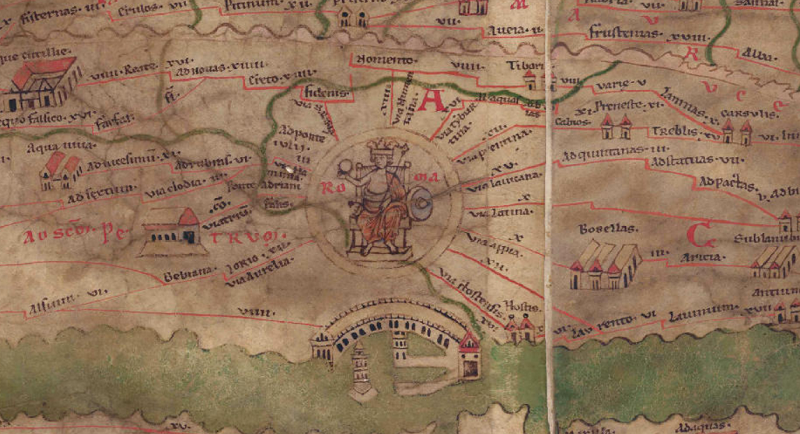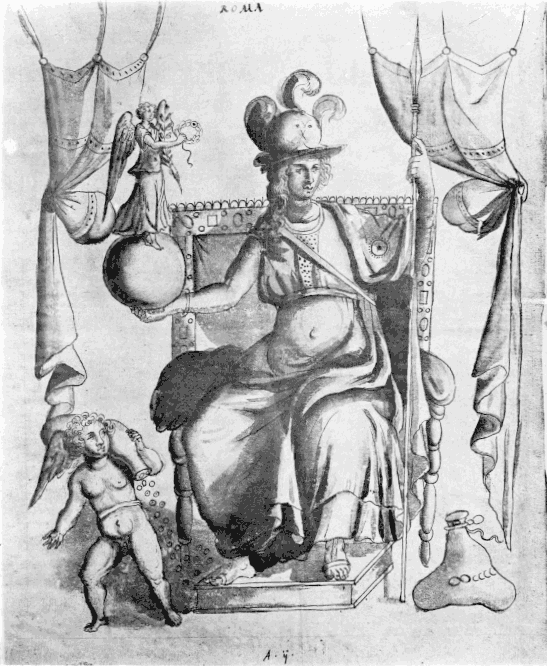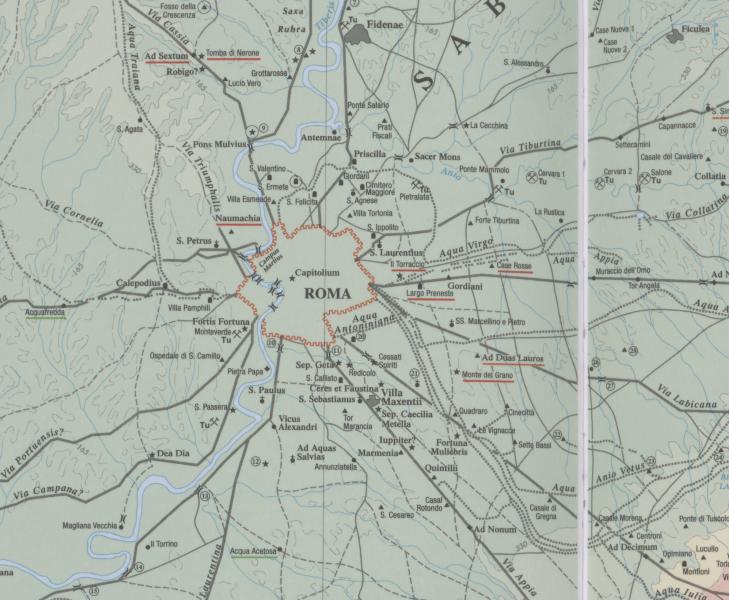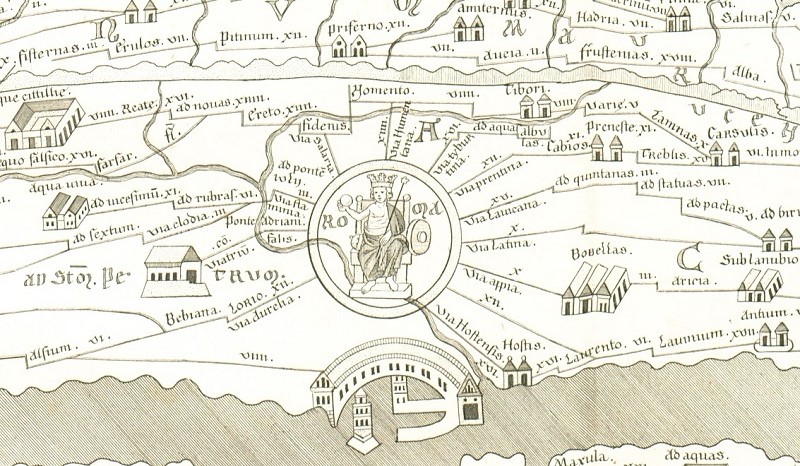
Tabula Peutingeriana – Einzelanzeige
| Toponym TP (aufgelöst): | Roma |
| Name (modern): | Roma/Rome/Rom |
| Bild: |  Zum Bildausschnitt auf der gesamten TP |
| Toponym vorher | Via Salaria Via Flaminia Ponte adriani (Ponte Adriani) Via Aurelia |
| Toponym nachher | Via Numentana (Via Numentana) Via Tyburtina (Via Tiburtina) Via Prentina (Via Praenestina) Via lauicana (Via Lavicana) Via Latina Via Appia [Via Laurentina] Via Hostensis |
| Alternatives Bild |
 |
| Bild (Barrington 2000) |
 |
| Bild (Scheyb 1753) |
 |
| Bild (Welser 1598) | --- |
| Bild (MSI 2025) | --- |
| Pleiades: | https://pleiades.stoa.org/places/423025 |
| Wikipedia | https://en.wikipedia.org/wiki/Ancient_Rome |
| Großraum: | Italien |
| Toponym Typus: | Ortsname mit Symbol |
| Planquadrat: | 4B5 |
| Farbe des Toponyms: | rot |
| Vignette Typus : | F Großvignette |
| Itinerar (ed. Cuntz): | Ab Urbe (106,5; 123,8; 124,8; 301,6; 302,2; 304,6; 305,8; 306,4; 308,5; 310,6, 497,10; 612,10), Romam (284,7), Roma (286,5; 286,6; 289,4; 300,1; 300,6), Per Urbem Romam (594,4), In urbe Roma (612,4; 612,7), ad urbem Romam (612,5), Ab Urbe Roma (617,6) |
| Inschriften (EDCS-ID): | |
| Alternativer Name (Lexika): | Roma III. Topographie (DNP) |
| RE: | Rom - https://ia600209.us.archive.org/1/items/PWRE48/Pauly-Wissowa_I_A1_1007.png |
| Barrington Atlas: | Roma (43 B2 / 44 B2) |
| TIR / TIB /sonstiges: |
|
| Miller: | Roma |
| Levi: | Roma (F) |
| Ravennat: | Roma (p. 71.30; 85.47), Romam (p. 72.10; 72.11; 72.36; 73.02; 73.41; 74.09) |
| Ptolemaios (ed. Stückelberger / Grasshoff): | Ἄστυ Ῥώμη (3,1,61); βασίλειον Ῥώμη (8,8,3) |
| Plinius: | Urbs (3,17; 3,43; 3,53; 3,66; 3,67), Roma, terrarum caput (3,38), Urbs Roma (3,40; 3,44), Roma (3,64; 3,68; 3,116; 4,20), pars Romae (3,68) |
| Strabo: | Ῥώμη (5,3,7; 5,3,8; 5,3,9; 5,3,10; 5,3,11; 5,3,12; 5,3,13) |
| Autor (Hellenismus / Späte Republik): | ἐν τῇ Ῥώμῃ (Pol. 3,61,7), τὴν Ῥώμην (Pol. 3,82,6; 3,82,9) |
| Datierung des Toponyms auf der TP: | Klassik (5./4. Jh.) |
| Begründung zur Datierung: |
|
| Kommentar zum Toponym: |
Antike Namensformen: |
| Literatur: |
[1] Bühl, G., Constantinopolis und Roma, Stadtpersonifikationen der Spätantike, Zurich 1995, S. 130-34. 177. 210. |
| Letzte Bearbeitung: | 10.12.2025 19:30 |
Cite this page:
https://www1.ku.de/ggf/ag/tabula_peutingeriana/trefferanzeige.php?id=222 [zuletzt aufgerufen am 01.01.2026]